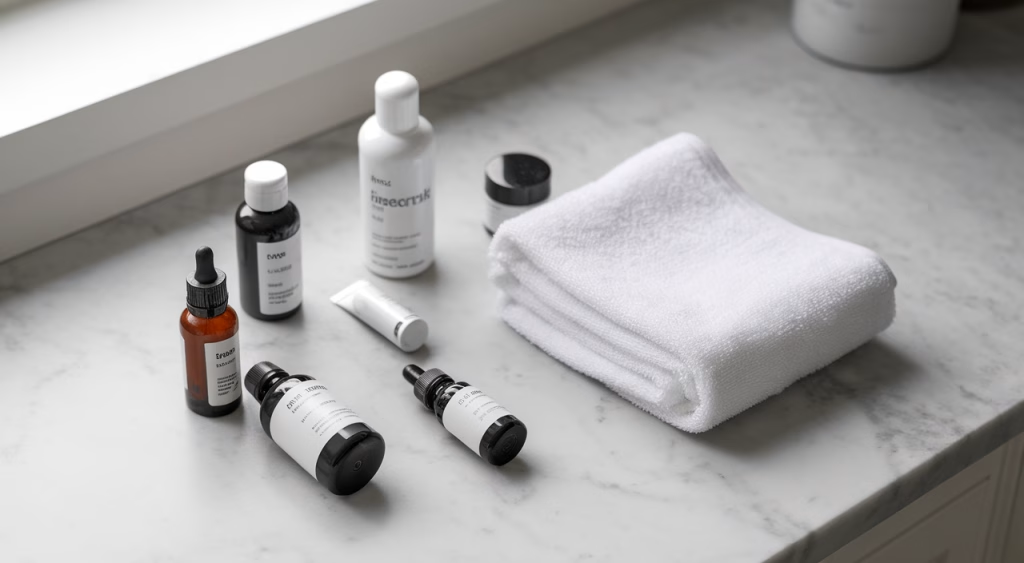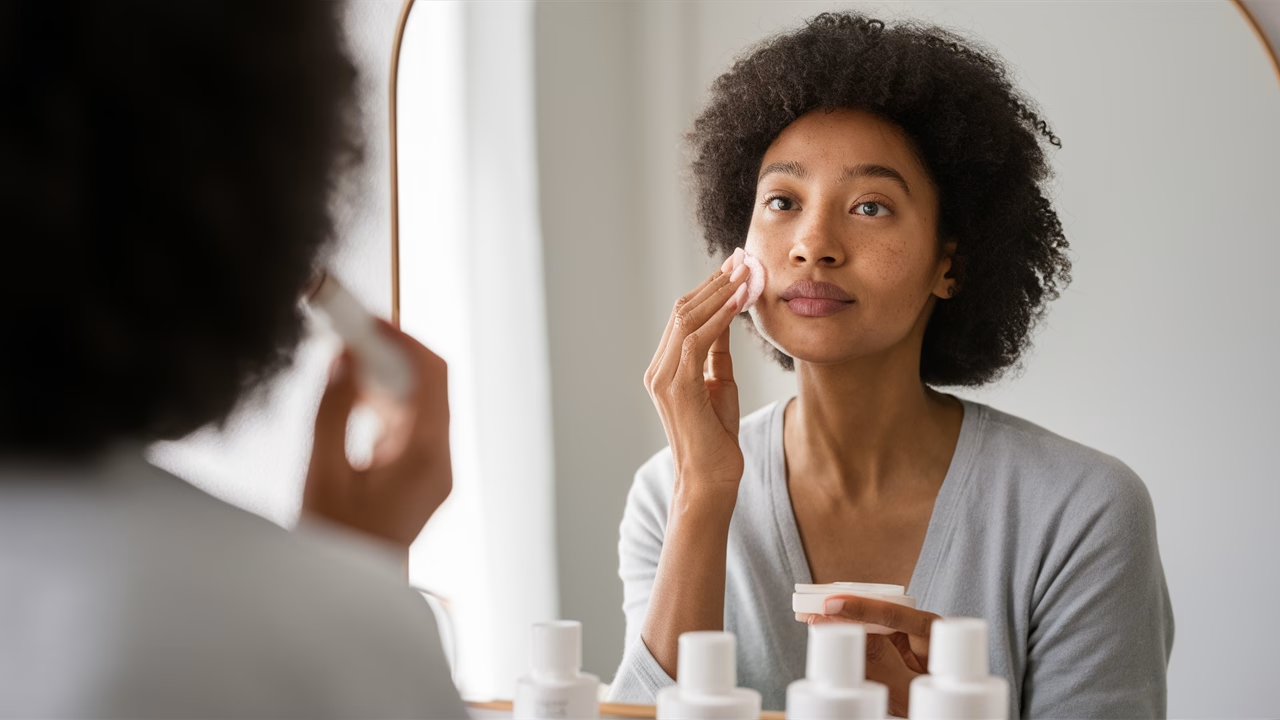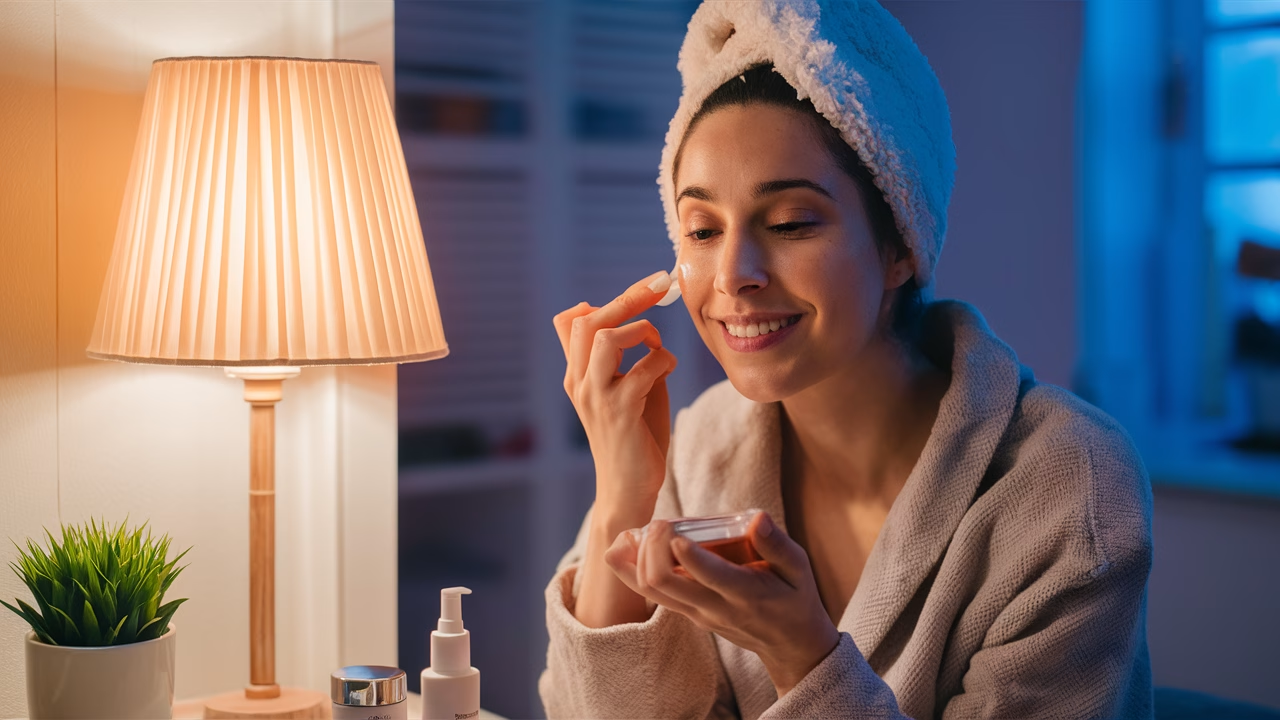What’s the right order for layering skincare products?
In short: Start light and finish heavy. When layering skincare products, always go from the thinnest to the thickest texture. This lets your skin absorb active ingredients efficiently while locking in hydration without clogging pores. The typical order is: cleanse, tone, treat (serums), moisturize, and protect (sunscreen by day; repair creams by night).
- Cleanser: Preps your skin by removing dirt and oil.
- Toner: Rehydrates and balances your skin’s pH.
- Serums: Targeted treatment steps featuring active ingredients.
- Moisturizer: Seals in hydration and enhances barrier functions.
- Sunscreen (AM): Critical final layer for daytime defense.
I. Understanding the Importance of Skincare Layering
Ever wondered why a fancy serum might not deliver the glowing results you expected? The answer might not lie in the product—but in the order you’re applying it. Layering skincare products the right way is essential for maximizing efficacy and protecting your skin’s delicate barrier.
Think of your skin as a sponge. If you pour thick cream on it first, would water (your lightweight serums) still soak in properly? Probably not. Similarly, heavier products can block lighter serums from penetrating, rendering your active ingredients less effective.
Proper skincare layering also helps target concerns more efficiently. For example, a hyaluronic acid serum can plump and hydrate immediately after toning, while a vitamin C serum on top boosts radiance and brightens over time. It’s about creating the perfect beauty regimen that lets hydration and treatments work in harmony instead of clash.
II. Essential Steps for Daytime Skincare Routine
A. Cleansing and Toning
Your morning skincare routine for dry skin and all other skin types sets the tone for your entire day. A gentle cleanse removes any oils or bacteria accumulated overnight. Stick to non-stripping formulas, especially if your skin leans dry or sensitive.
Cleansing is followed by a toner—often overlooked but quietly essential in your skincare routine. A good toner does more than just balance your pH; it creates a hydrated, receptive canvas for anything that follows.
For those with dry skin, opt for toners containing glycerin, hyaluronic acid, or rose water. If you’re oily or acne-prone, look for ingredients like witch hazel or niacinamide to reduce excess sebum.
B. Serum Application
This is where the magic truly begins in layering skincare products. Serum layering is your opportunity to target specific skin issues, whether it’s dark spots, acne, or dehydration. The trick? Know how to combine them wisely.
- Hyaluronic Acid: Always first. It draws water into the skin, enhancing the benefits of every product layered on top.
- Vitamin C: Brightens dullness and protects against free radical damage.
- Niacinamide: Calms inflammation and regulates oil production.
Use a light tap-and-press method instead of rubbing for better absorption. If you have sensitive skin, use the best serum for sensitive skin—formulated with fewer actives and more soothing agents like centella asiatica or panthenol.
C. Moisturizing and Sunscreen
Once your serums have been absorbed (typically wait a minute between applications), seal all that goodness in with a moisturizer. Choose your moisturizer based on your skin type: for dry skin, thick creams; for oily skin, opt for gel- or water-based formulas.
And never skip sunscreen. No matter your skin type, SPF is the most important step in your morning skincare routine for dry skin, oily skin, or anything in between. Sunscreen protects your skin from harmful UV rays and preserves the benefits of the actives you’ve just applied.
III. Nighttime Skincare Routine Demystified
A. Double Cleanse
Here’s what often happens: people slap on their night cream over traces of sunscreen, makeup, and daily grime. Sound familiar? That’s why a proper double cleanse is a must for effective skincare layering.
Start with an oil-based cleanser to dissolve makeup and oil-soluble debris, followed by a gentle water-based cleanser to purify. This prepares your skin for high-performance nighttime facial treatments for glowing skin.
B. Treatment Serums
Evenings offer the best time for intensive repair because your skin goes into regeneration mode while you sleep. This is when you can introduce more potent actives in your beauty regimen like:
- Retinol: Boosts collagen, softens fine lines.
- Peptides: Strengthen skin barrier.
- AHAs/BHAs: Exfoliate and clear pores.
Wondering about combining these when layering skincare products? It’s best to alternate exfoliants and retinoids on separate nights to minimize irritation. Remember, patience and consistency are key—visible changes with these ingredients often begin around 4–6 weeks in.
C. Overnight Masks and Creams
Think of this final step as the cozy blanket your skin deserves after a long day. Overnight products range from simple hydration-restoring creams to advanced sleeping masks rich in antioxidants and ceramides.
If your skin is dry or flaky, look for formulas with occlusives like shea butter or squalane. For oily or breakout-prone skin, lightweight night gels or barrier-repair emulsions are best.
This is also the best time to explore richer beauty regimens or K-beauty-style layering, as your skin isn’t exposed to sun or pollution.
Cost Guide: Skincare Layering on Every Budget
| Skincare Step | Low-End ($) | Mid-Range ($$) | High-End ($$$) |
|---|---|---|---|
| Cleanser | 5–12 | 15–30 | 35+ |
| Toner | 6–10 | 12–28 | 35+ |
| Serums | 10–20 | 25–60 | 75+ |
| Moisturizer | 8–16 | 20–45 | 55+ |
| Sunscreen | 7–15 | 18–35 | 45+ |
Final Thoughts: Layering with Intention & Intuition
There’s no one-size-fits-all when it comes to layering skincare products. The real secret lies in respecting the function of each product, working with your skin type, and listening to your skin’s ongoing needs. Don’t just add skincare steps because they exist—each layer should serve a purpose.
Be patient with your skincare routine. Give your skin time to respond and adjust. Build your beauty regimen one product at a time, and don’t be afraid to simplify if layering starts to feel overwhelming. Whether you’re focusing on facial treatments for glowing skin or maintaining a simple routine, skin thrives on consistency, not complexity.
Frequently Asked Questions
- When should I apply facial oils in my routine?
Apply facial oils after serums and before or with your moisturizer. Oils help seal in moisture and enhance the skin barrier. - Can I layer different active ingredients like retinol and vitamin C?
Generally, it’s safer to use them at different times of the day—vitamin C in the morning, retinol at night—to avoid irritation. - How long should I wait between product application layers?
Allow 30 seconds to 1 minute between layers for optimal absorption, especially between serum and moisturizer. - Is toner really necessary?
While not mandatory, a toner can significantly enhance hydration and help your serums penetrate more effectively. - What’s the best order for acne-prone skin?
Cleanser → toner → acne treatment serum (like salicylic acid) → oil-free moisturizer → sunscreen (AM) or treatment cream (PM). - Do I need a different skincare routine for travel?
Yes. Airplane air, weather changes, and stress can impact skin. Simplify but keep essentials: cleanser, serum, moisturizer, sunscreen. - Can I skip moisturizer if I have oily skin?
No. Opt for a lightweight, non-comedogenic formula. Skipping moisturizer can cause more oil production and imbalance.


